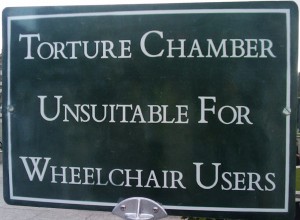 Not everyone thinks of it but knowing who would not make good customers is every bit as important as knowing who does make good customers.
Not everyone thinks of it but knowing who would not make good customers is every bit as important as knowing who does make good customers.
Novice businesspeople and even beginning marketers would like to think that everyone’s a potential customer but that’s simply not true. In fact, although the end result is binary — people either buy from you or they don’t — there’s a whole continuum of how likely someone is to become a customer.
If you never spend time identifying who are not good prospects, you could waste a lot of time and money chasing down every conceivable lead, no matter how far-fetched.
By identifying several points along the continuum and creating a demographic profile for a hypothetical prospect at each point, you are better able to see where your time and resources should be spent.
Because it is a continuum, the attributes you list in the demographic profile are not necessarily opposites. For instance, just because your ideal customer is male doesn’t mean that all women are lousy prospects.
Some attributes don’t have an opposite. After all, what is the opposite of 40-45 years old?
So you can’t take shortcuts and simply say that your worst prospects are everything that your best prospects aren’t. It could very well be the case that a 43 year old male is a great prospect for your business but another 43 year old male is a terrible prospect.
In fact, even using the word “demographics” is doing a disservice to the process. A good customer profile goes much deeper than mere demographics.
A word that gets bandied about in certain circles is “psychographics”. This encompasses the interests, desires and other attributes that are missed by demographics. Your best prospects are interested in horses? That’s a psychographic. Prefer the beach over the mountains? Another psychographic.
If you augment your demographic profiles with psychographic data, and if you’re serious about the process, you can develop very detailed portraits of your customers and prospects.
Is this manipulative? Quite the contrary!
If you find out what deeply interests me and you just happen to offer something which satisfies that interest, I will be rather happy to hear from you. The flip side of that is, if what you offer does not interest me and you know that and don’t waste your time trying to sell me on it, you save a great deal of time, energy and money. All of those things can be better spent pursuing customers whose interests are more closely aligned with what you offer.
Click any of the icons below to retweet these passages from the above article.
![]() Warning: Torture Chamber Unsuitable for Wheelchair Users
Warning: Torture Chamber Unsuitable for Wheelchair Users
![]() Knowing who does NOT make good customers is as important as knowing who does.
Knowing who does NOT make good customers is as important as knowing who does.
![]() Although the end result is binary, there’s a whole continuum.
Although the end result is binary, there’s a whole continuum.
![]() If you never spend time doing this, you could waste a lot of time and money.
If you never spend time doing this, you could waste a lot of time and money.
![]() Attributes in a demographic profile are not necessarily opposites.
Attributes in a demographic profile are not necessarily opposites.
![]() What is the opposite of 40-45 years old?
What is the opposite of 40-45 years old?
![]() A good customer profile goes much deeper than mere demographics.
A good customer profile goes much deeper than mere demographics.
![]() Augment demographic profiles with this and you get very detailed portraits of your prospects.
Augment demographic profiles with this and you get very detailed portraits of your prospects.






 After the meal, my wife and I both ordered coffee. I’m not really much of a coffee drinker but I will drink it sometimes just for taste.
After the meal, my wife and I both ordered coffee. I’m not really much of a coffee drinker but I will drink it sometimes just for taste.